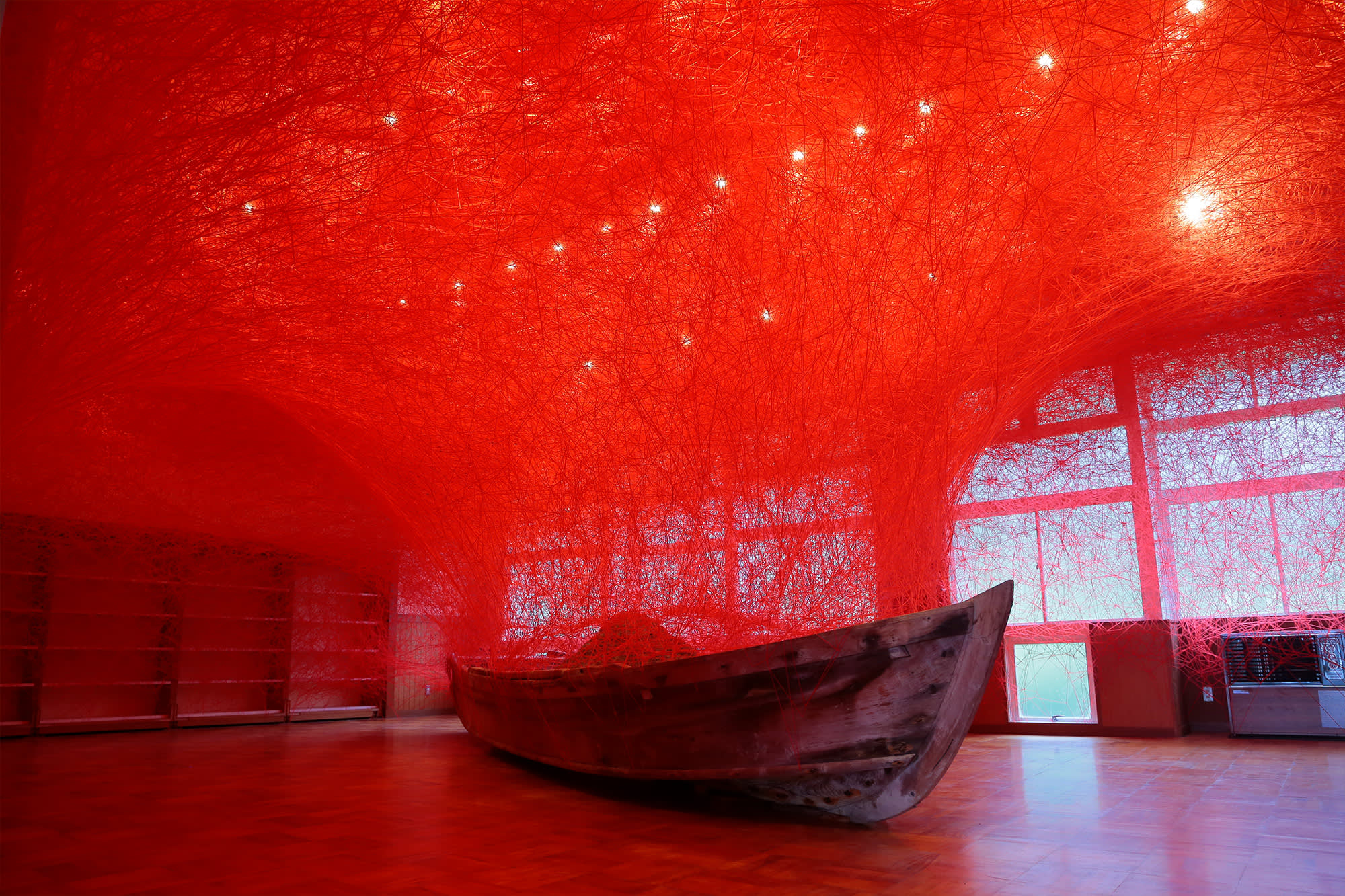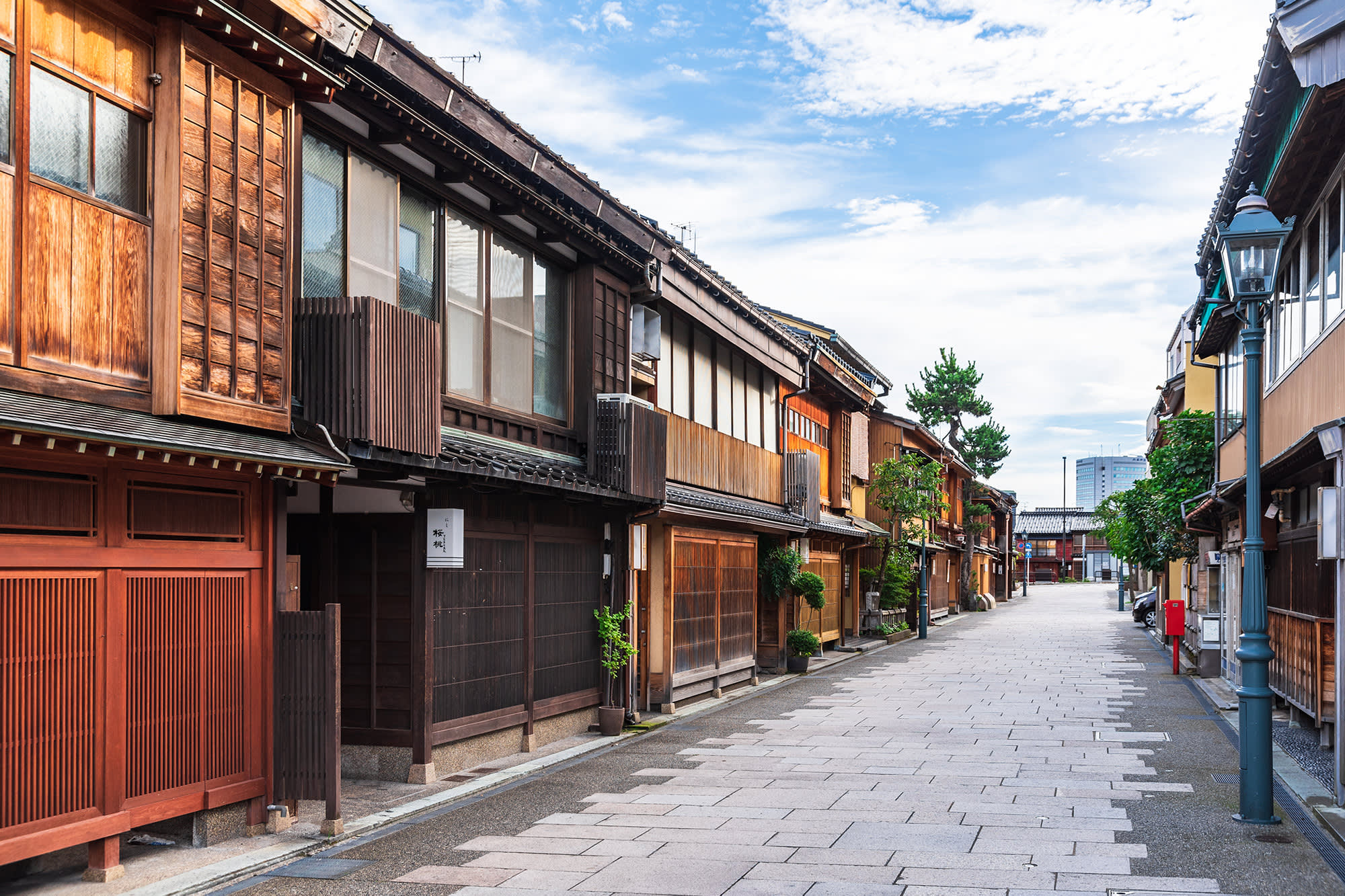
FIND YOUR ISHIKAWA
Art & Architecture: From Traditional to Contemporary
Art has flourished in Ishikawa for centuries. The wealthy daimyo lords who ruled the area from 1583 to 1869, the Maeda family, poured immense resources into fine art, performing arts, traditional crafts, and architecture, as well as tea ceremony and cuisine. Ishikawa remains a center of art and architecture. The prefectural and municipal governments continue to foster artistic talent by promoting arts programs among young people and bringing exhibitions and performances to the region.
A traditional art heritage

Traditional crafts that emerged from the patronage of the daimyo lords include gold leaf, Kaga-yuzen silk dyeing, and Ohi ware—all of which continue to be practiced in Ishikawa. Kutani ware, a local porcelain style that emerged in the mid-1600s, continues to evolve with the times. See examples of Kutani ware through the ages at the Kutani-yaki Art Museum and the Kutani Ceramic Art Village or view a historically important 1824 kiln at the Kutani-yaki Kiln Exhibition Hall.
The National Crafts Museum, which moved from Tokyo in October 2020, is a testament to the richness of Ishikawa's craft culture. The museum houses around 1,900 works with an emphasis on crafts from the late nineteenth century to the present.
Traditional performing arts are another key part of Ishikawa's heritage. Noh theater was a favorite of the Maeda family. Visitors can learn more about Noh at the Kanazawa Noh Museum and see a performance at the Ishikawa Prefectural Noh Theater. Geisha continue to entertain with traditional music and dance in the historic "teahouse" districts of Kanazawa and at the Yamanaka-za Theater.
Modern and contemporary art
Modern and contemporary art thrive in Ishikawa, thanks to continued support for the arts. The Ishikawa Prefectural Museum of Art displays modern paintings and sculptures from the Meiji era (1868–1912) onward, with a focus on works by artists from Ishikawa. Older works previously owned by the Maeda family and contemporary crafts round out the collection. Nearby, the 21st Century Museum of Contemporary Art, Kanazawa is a major destination for cutting-edge works by Japanese and international artists. Most of the gallery space is devoted to temporary exhibits that change quarterly.
Every three years, the Oku-Noto Triennale brings contemporary art to the rural Noto Peninsula, with installations set among pastoral scenes of rice farms and the coast along the Sea of Japan. Some installations from the festival's first iteration in 2017 remain permanently in the area.
Architecture from past to present
Ishikawa's wealth encouraged the creation of noteworthy architectural works around the prefecture, and many of these historic buildings and townscapes are still intact. Kanazawa's "teahouse" districts—Higashi-Chaya, Nishi-Chaya, and Kazuemachi—are prime examples of wooden machiya-style townhouses. Geiko (the local name for geisha) still entertain exclusive clientele with music, dance, and games inside many of the traditional-style storefronts. Ishikawa was home to many owners of kitamaebune—wooden cargo ships that traded at ports along the Sea of Japan coast from the Edo period (1603–1867) to the turn of the twentieth century. These tycoons built large houses in the Hashitate district of Kaga and the Kuroshima district of Wajima, where many still stand.
Ishikawa has a wealth of contemporary architectural works. Visitors who arrive at Kanazawa Station are greeted by the wooden Tsuzumimon Gate, now a symbol of the city, and the glass Motenashi Dome. Other noteworthy structures in the Kanazawa area include the D.T. Suzuki Museum, a visual representation of Suzuki's Zen thought by Taniguchi Yoshio (1937–), and the Ishikawa Nishida Kitaro Museum of Philosophy, designed by Ando Tadao (1941–). The Kaga area has the public bathhouse of Katayamazu Onsen, designed by Taniguchi, and the Nakaya Ukichiro Museum of Snow and Ice, the hexagonal design of which evokes the shape of a snowflake—a major focus of Nakaya's studies.







